A Parent’s introduction to Early Years Wellcomm and Wellcomm Primary Speech and Language Toolkits
What is Wellcomm?
- Wellcomm is a speech and language toolkit that is designed to assess children’s speech and language skills. Not how they talk but the language they use and the language and grammar they understand.
- The first Wellcomm Toolkit is designed from birth to 6 years old, so is generally used in Nursery, Reception and Year One.
- The second toolkit (Wellcomm Primary) is used from 6 years to 11 years, so is used in Year One and beyond.
How is Wellcomm assessed?
- It is a paper based assessment – completed 1:1 with the child
- Universal (all children are assessed)
- Each assessment takes on average between 10-20 minutes per child
- It should be completed in a quiet environment, ideally with an adult the child knows
- Gives a RAG (red/amber/green) rating
- Judgements are based on observations, discussions with you as parents and the assessment toolkit.
What happens after my child is assessed in Wellcomm?
- If your child has been assessed as a ‘Green’ in Wellcomm and they have been assessed in the correct age for their assessment, no targeted support is required.
- If your child is assessed as an ‘Amber’ your child would require interventions for a period of time.
- If your child is assessed as a ‘Red,’ your child may need external support or targeted support for an extended period of time.
What happens in a Wellcomm intervention?
- Your child will be involved in interventions at least once a week. They will complete a range of activities based around the areas that they did not fully understand from the assessment.
- The teacher or TA will use Wellcomm’s Big Book of Ideas to support them in delivering speech and language interventions.
- You may be sent home photocopies from the Big Book of Ideas with activities that you can complete at home to compliment the intervention carried out in school. } You can also access the website www.ecdlp.co.uk. Go to the ‘Our Big Ideas’ menus for the activities. Ask your child’s class teacher to confirm which section your child should be working on.
How else can I support my child at home?
- TALKING and LISTENING as much as you can to your child.
- Use everyday opportunities to talk with and listen to your child as they share things that are of interest or importance to them. Show your child you are interested in what they are saying when they are speaking by giving nods, smiles, sounds, supportive words and gestures.
- Repeating phrases back to your child if they use the wrong grammar or incorrect vocabulary. Encourage your child to copy you.
- Reducing and setting limits for screen time e.g. tablets and phones.
MAXIMUM 2 HOURS PER DAY FOR 5+ YEAR OLDS (not including educational use).
- Reading with your child; read to them daily as well as listen to them read. Establish a routine after school for both reading and homework.
- Teaching your child songs and nursery rhymes.
- Completing homework/learning activities together e.g. learning sounds, spellings and maths activities. Ensuring there is always a quiet place to complete
- Providing resources for arts and crafts activities such as painting and drawing.
- Using websites to support the child’s leaning:
- https://www.bbc.co.uk/cbeebies
- https://mathsframe.co.uk/en/resources/category/22/most-popular
- https://www.topmarks.co.uk/
- https://spellingframe.co.uk/
- Visiting your local library (as well as the Central Library in Birmingham), museums and other places of interest.
- Creating regular opportunities to play with friends.


